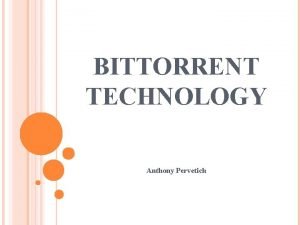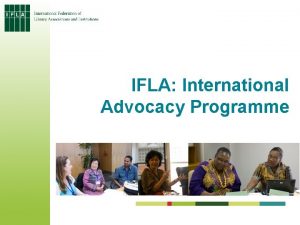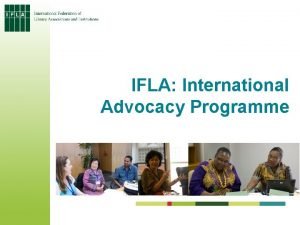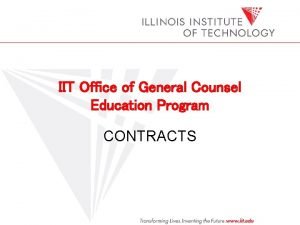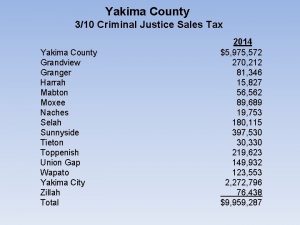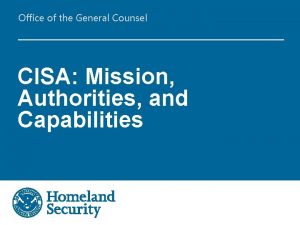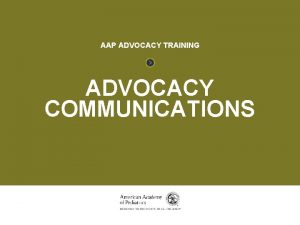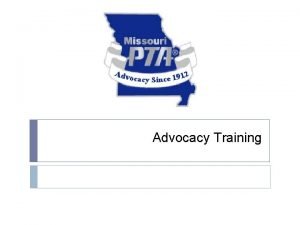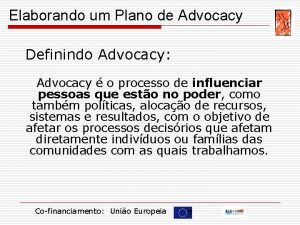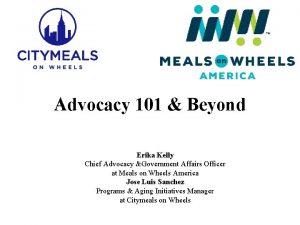APCO International Advocacy Update Jeff Cohen Chief Counsel










- Slides: 10

APCO International Advocacy Update Jeff Cohen Chief Counsel Director of Government Relations APCO International 1

Topics v. Protecting Public Safety Spectrum • 6 GHz band • 4. 9 GHz band v. Wireless 9‐ 1‐ 1 Location Accuracy v. Next Generation 9‐ 1‐ 1 2

Protecting Public Safety Spectrum: 6 GHz • The 6 GHz band is used for fixed microwave links that form the backbone of emergency communications, and is heavily used by public safety, utilities, telecom companies, and others. • In April 2020, despite significant opposition from APCO and others, the FCC decided to allow hundreds of millions of new unlicensed devices to share this band without adequate protections from causing harmful interference to public safety’s systems. – The push for these devices came from the FCC’s desire to create opportunities for “next generation Wi‐ Fi. ” • There will be no way to quickly identify, locate, and eliminate sources of interference, leading to unrecoverable public safety harm. 3

Protecting Public Safety Spectrum: 6 GHz • APCO first filed formal petitions with the FCC to seek reconsideration and prevent the rules from taking effect. • Recognizing the need for more extreme action, APCO filed a lawsuit in the U. S. Court of Appeals to vacate the new spectrum sharing rules. – APCO filed an emergency motion with the Court to temporarily halt the implementation of the FCC’s rules. – The Court denied the extraordinary request, but the appeal is still in process. • Other parties (representing utilities, a major wireless carrier, and others) sued as well, but APCO is the only party representing public safety. • APCO will be filing arguments with the Court in the coming months. • As a community we should be on the lookout for interference cases. • FCC may yet further loosen the rules for unlicensed operations. 4

Protecting Public Safety Spectrum: 4. 9 GHz • The 4. 9 GHz band was dedicated for public safety use and uniquely suited for fixed and wireless broadband applications such as mobile hotspots, robotic control, high resolution video streaming, etc. • In September 2020, the FCC, in a split decision, adopted new rules that strip the 4. 9 GHz band from public safety and grant states the exclusive right to lease access to the spectrum to commercial users. The FCC also instituted a freeze on new operations. • The new rules enable states to enter leasing agreements that can threaten ongoing public safety use, because there are no longer any requirements to prevent harmful interference or provide priority access to public safety. • APCO joined with eleven other public safety associations on a press release strongly criticizing the action. • APCO intends to explore further options to protect public safety’s use of this important spectrum. 5

Wireless 9‐ 1‐ 1 Location Accuracy: Background • In 2015, the FCC adopted new 9‐ 1‐ 1 location accuracy rules for indoor wireless calls, largely in line with a roadmap negotiated by APCO, NENA, and the nation’s largest wireless carriers. – This included the concept of dispatchable location (DL) as the gold standard for public safety. – The rules gave carriers two options for providing vertical location: deploy z‐axis or DL solutions. • The wireless industry tested z‐axis technologies and made progress with a DL solution that was based on using a database of reference points (such as Wi‐Fi access points) to help identify the caller’s location, known as the National Emergency Address Database (NEAD). – Z‐axis testing was successfully completed for a few technology vendors. – The carriers however ended up abandoning the NEAD. • As the first benchmark to provide indoor location information approaches (April 2021), the FCC acted in July 2020 to, among other things, confirm the timeline for deployment and modify how carriers are to provide DL due to the abandonment of the NEAD‐based approach. 6

Wireless 9‐ 1‐ 1 Location Accuracy: APCO’s Efforts • APCO has been trying to get the FCC to look at the bigger picture. – APCO has focused on DL, which is the preferred location information for public safety telecommunicators, and expressed concern that the rules are not likely to produce the improvements that have been promised. – ECCs should have the best‐available, actionable location information. • Wireless carriers have filed a Petition for Reconsideration to push back the upcoming 2021 requirement for deploying z‐axis technology. – APCO is strongly opposed to delaying the benchmarks. • APCO filed a Petition for Reconsideration with the FCC. – The FCC’s new DL benchmark isn’t effective, and fails to establish a new and rigorous course for delivery of DL to ECCs. – The petition asks the FCC to establish a different benchmark in order to close a loophole and instead establish a minimum percentage of 9‐ 1‐ 1 calls that must be delivered with DL. 7

Federal Funding for NG 9‐ 1‐ 1 • Identical bills in the House and Senate: Next Generation 9‐ 1‐ 1 Act of 2019. • Key provisions: – Authorizes $12 B in federal funding to deploy NG 9‐ 1‐ 1 nationwide. – Creates modern definitions of important terms (NG 9‐ 1‐ 1, interoperability, and ECC). – Places important conditions on grant recipients such as interoperability, sustainable funding mechanism, no fee diversion, etc. • The Public Safety Next Generation 9‐ 1‐ 1 Coalition was formed. – Consists of APCO and major national law enforcement, fire and EMS associations. – Committed to advancing legislation to enable a nationwide upgrade to NG 9‐ 1‐ 1. – https: //ng‐ 911 coalition. org/ • The Coalition developed edits to the NG 9‐ 1‐ 1 bill such as: – Increasing to $15 B. – Adding a Public Safety Advisory Board. – Additional measures on cybersecurity. 8

Additional Bills to Watch • Outage Reporting Bill (H. R. 5918/S. 4667) – Would require the FCC to adopt rules that describe the circumstances in which service providers must submit timely notifications to ECCs about network disruptions that prevent the origination of 9‐ 1‐ 1 calls or the delivery of ALI or ANI. – APCO worked closely with the staffers who wrote the bill to ensure the language specified in the notifications must be “timely” and in a format that’s “easily accessible” to facilitate ECCs’ situational awareness. – Passed the House, awaiting action in the Senate (bipartisan bill has been introduced). • 9‐ 1‐ 1 SAVES Act (H. R. 1629/S. 1015) – Would direct OMB to categorize Public Safety Telecommunicators as a Protective Service Occupation (rather than administrative/clerical) in the federal Standard Occupational Classification. – Identical bills in the House and Senate; both have been referred to relevant committees. – Both bills have bipartisan support and the House version has 129 co‐sponsors and the Senate version has 27. 9

www. apcointl. org/government‐relations @GRO_APCO gro@apcointl. org 10
 Mininova torrent
Mininova torrent Database backup and recovery techniques
Database backup and recovery techniques Lesson 3 commander in chief and chief diplomat
Lesson 3 commander in chief and chief diplomat International advocacy programme
International advocacy programme International advocacy programme
International advocacy programme International advocacy programme
International advocacy programme Chief executive boards international
Chief executive boards international Iit general counsel
Iit general counsel Yakima assigned counsel
Yakima assigned counsel Cisa crr
Cisa crr Seek wise counsel
Seek wise counsel
